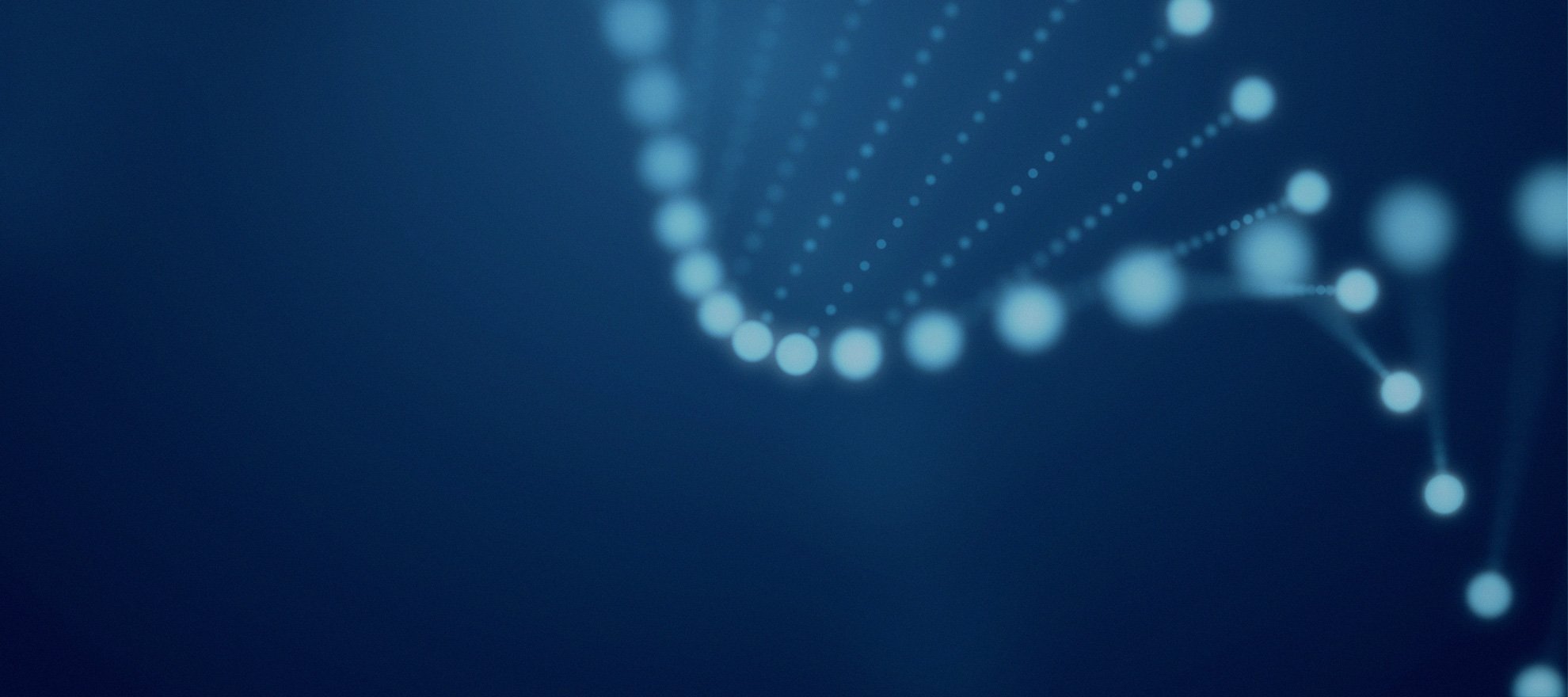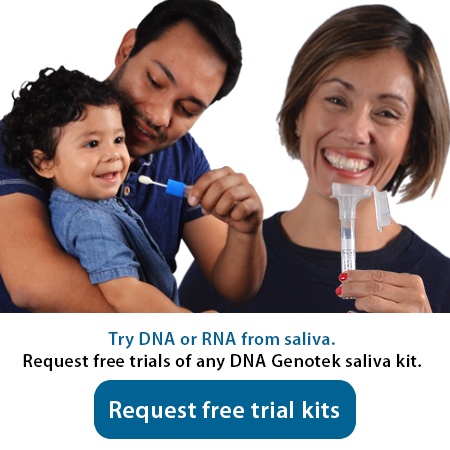2020-03-27
Dr. Carolyn Compton, former director of the OBBR National Cancer Institute, once said
“We now have the technical ability to get the wrong answers with unprecedented speed. If we put the wrong stuff into the front end of our analytical pipeline…we’ll pollute the scientific literature with incorrect data that will take us a long time to sort out. This is a crisis that requires disruptive innovation.”[1]
We couldn’t agree more. DNA GenotekTM has developed expertise with many different non-invasive sample types over the years, including saliva for genomic and stool for microbiome analysis. With any sample type, quality is paramount to generate the best sequencing results and subsequently to produce the most accurate data.
In this podcast, I spoke with Mike Tayeb and Brice LeFrancois, two experts from our research and development team. Both highlighted the best practices they use in the lab with saliva and stool samples to get optimal sequencing results. Mike focused his discussions on saliva for human genomics and Brice on the fecal microbiome. You can listen to the full podcast below:
In this blog, I will highlight the genomic portion of the podcast with Mike Tayeb, covering how to get the best sequencing results with saliva samples.
Are there any particular extraction methods that would be best suited for saliva?
According to Mike, there are 3 factors you have to consider.
- Whether or not you will get enough DNA for your sequencing library prep
“The good news is that most library prep methods require very little DNA, 100 ng or less, so getting enough DNA is not difficult”
- Will your extraction method give you DNA free of inhibitors?
“Some library preps, especially those using tagmentation like Nextera, can be sensitive to certain compounds in the input DNA. The good news is that, unless your extraction method is quite crude, most methods will provide DNA sufficiently pure for sequencing.”
- The molecular weight of the extracted DNA
“Most library prep methods require DNA that is high in molecular weight. People’s opinions on what is high molecular weight varies quite a bit, but I generally want 20kb or larger.”
With all that said, in Mike’s experience, most modern DNA extraction methods work quite well.
“I have used ethanol precipitation-based methods, such as PrepIT·L2P from DNA Genotek or Puregene from Qiagen, and found that both of these work very well with the added advantage of being very low cost while providing high molecular weight DNA. Spin column-magnetic bead-based methods also work well. Of course, if you need high-throughput extraction, you’ll probably be going with a magnetic bead-based method on an automation system”
Does the presence of RNA affect the sequencing results?
This is a question our technical support team gets rather frequently. Depending on the extraction method you use, you may get RNA co-purifying with your DNA.
“I have yet to encounter a library prep methodology where the presence of RNA has posed a problem for DNA sequencing.”
Where RNA does interfere is with accurate quantification of the DNA. As most people probably already know, the most common spectrophotometric methods of quantification cannot distinguish between DNA and RNA and will, therefore, tend to over-estimate the DNA concentration leading you to underload the library prep reaction.
“This is why library prep manufacturers usually recommend quantifying your DNA using DNA-specific fluorometry, such as Picogreen or Qubit. Quantifying your DNA properly ensures you don’t inadvertently underload the library prep and end up with sub-optimal results.”
If you do need to remove RNA from your sample for any reason, you can either use a DNA extraction method that includes an in-line RNase-treatment, or you can perform an RNase-treatment post-extraction.
“In my experience, treatment post-extraction is more effective. However, if given the choice, I skip RNA removal altogether. I find it to be extra effort and extra expense with little to no benefit.”
Related Blog: 10 hints to optimize DNA saliva samples, based on millions of samples
Can bacterial content affect your sequencing?
Another common question researchers ask DNA Genotek’s technical support team is regarding bacterial content and its effect on sequencing. Whole saliva is known to have a higher bacterial content than blood but lower than buccal swabs/scrapings.
According to Mike, the impact of bacterial DNA in the sample depends on the type of sequencing you are doing. If we talk about targeted sequencing first, such as amplicon sequencing that generates your target fragments by PCR, or a capture library, such as whole exomes, then bacterial content isn’t much of an issue. The human fragments of interest are specifically amplified or captured and everything else is thrown away.
“With whole-genome sequencing, bacterial DNA content does have more of an impact. I’m not currently aware of any methodology that can effectively separate human DNA from bacterial DNA while maintaining full coverage across the entire genome, so when sequencing DNA from any oral sample, including saliva, you will be sequencing the bacterial DNA as well.”
This is one of the reasons why it is important to collect saliva samples into a preservative designed to minimize the growth of bacterial DNA in the sample, such as Oragene ® or ORAcollect®.
“The bacterial DNA content of saliva is about 10% of the total DNA by mass, on average, but this amount will increase dramatically in a short time if the sample is not properly preserved. With other oral samples, such as buccal swabs, the bacterial DNA content is usually much higher, with some literature sources quoting up to 90%. This is probably partly because bacteria tend to be adherent and stick to the mucosal membrane, which you then scrape with a swab but also because buccal swabs are typically just left to dry out with no active inhibition of bacterial growth. For this reason, I prefer to use saliva over buccal swabs.”
For whole-genome sequencing, how much sequencing does one have to do to account for the bacteria?
“Since you will be sequencing the bacterial DNA along with the human DNA, you will lose some sequencing yield to the bacterial DNA. There is no getting away from this. As I [mentioned before], if you collect your sample using a method that minimizes bacterial DNA, such as Oragene·DNA, you will reduce the amount of wasted sequencing reads.”
According to Mike, one thing that is important to remember is that the amount of bacterial DNA in a saliva sample will vary from one person to another. For more information, you can check out our white paper on the human genomic DNA content of saliva samples collected with Oragene·DNA.
“Since the amount of bacterial DNA is generally low overall, many people I’ve spoken to simply opt to prepare their libraries and sequence all samples at approximately the same depth. They sometimes choose to reduce the number of samples they include in a sequencing run by a small amount to account for the reads lost to bacterial DNA.”
If you want to sequence all of your samples to a similar depth of coverage of the human genome, then there are mechanisms by which you can quantify the amount of bacterial DNA in each sample. You can quantify the amount of bacterial DNA in a sample very quickly and inexpensively by qPCR.
Related Blog: The impact of bacterial DNA in saliva on whole genome sequencing
In the end, would you consider saliva as a good source of DNA for sequencing?
“Saliva is a good source of DNA for all types of sequencing. With whole genome, there is the caveat of bacterial DNA, however saliva is much easier and cheaper to collect than blood, and enables access to populations that you may not otherwise have access to.”
If you have any questions or want to learn more about the best practices with saliva and/or stool samples to get the best sequencing results, send us an email at info@dnagenotek.com.
References:
[1] https://www.akampion.com/news/2010/05/food-for-thought-why-tissue-sample-quality-matters-for-personalized-medicine/



